My work with TensorMark began as a visual identity project and grew into a more involved role as a contract UX/UI designer.
TensorMark builds technology to recognize faces and trigger actions. For example, a secure facility might need to identify an employee and unlock a restricted area. My job was to design interfaces that would empower administrators to configure such workflows to integrate with both hardware and their CRMs.
TensorMark (Contract)
Sketch, Illustrator, Invision
Kurtis Jensen (Back-End)
Lauren Chandler (Front-End)
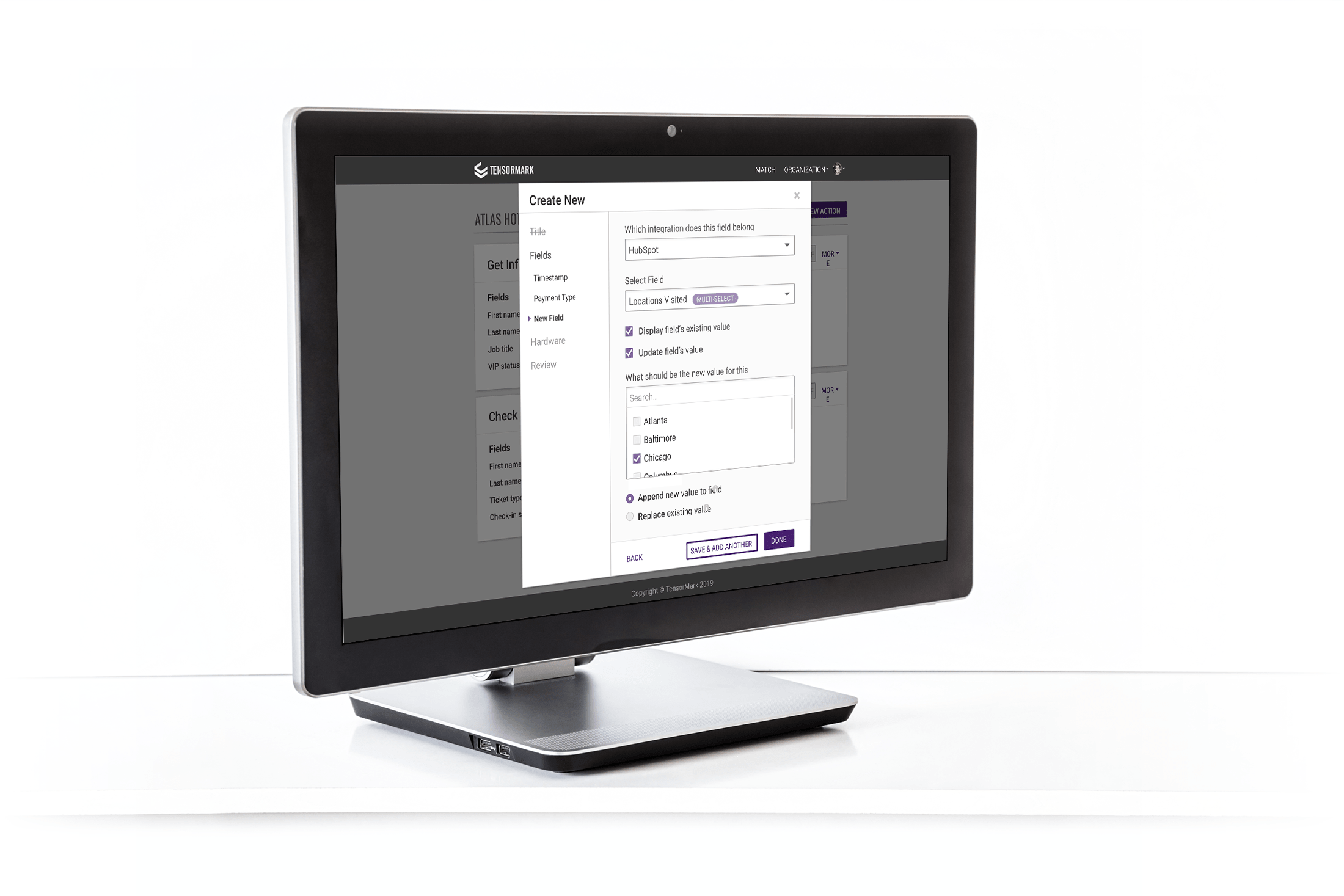
TensorMark’s software uses facial recognition to verify someone’s identity and take related actions like unlocking a door, updating a CRM, or checking in a guest.
I needed to design simple interfaces to help partner administrators define these actions, manage CRM integrations, and control employees’ access privileges.
Customer Interviews
Rapid Prototyping
User Personas
Journey Mapping
Tree Testing
Competitive Analysis
Customer research was key to understanding the nature and scope of possible use cases. I began with three deep-dive interviews, speaking with a bar owner, a medical researcher, and a concert organizer. After each interview I a ran a quick tree test to assess how well subjects could navigate TensorMark’s existing information architecture.
I translated my findings into user personas with corresponding journey maps:
- Bobby Businessman, an old-school factory manager
- Priyathe Paranoia, a cautious researcher in a secure lab
- Gabe Gatekeeper, a stressed bouncer at a popular club
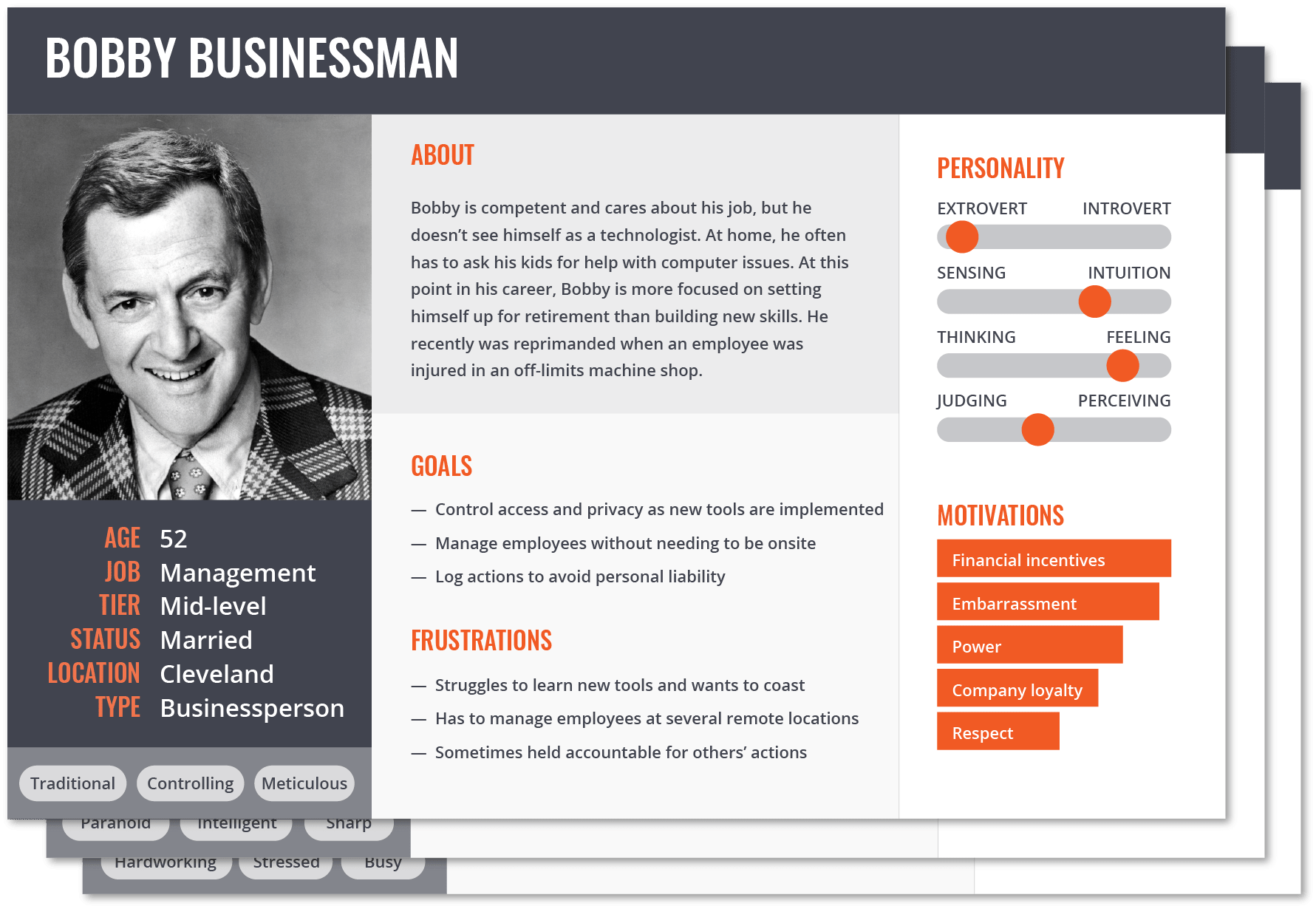
As I iterated on design concepts, I built lo-fi prototypes and tested them on subjects who had never seen the software and who had no technical background.
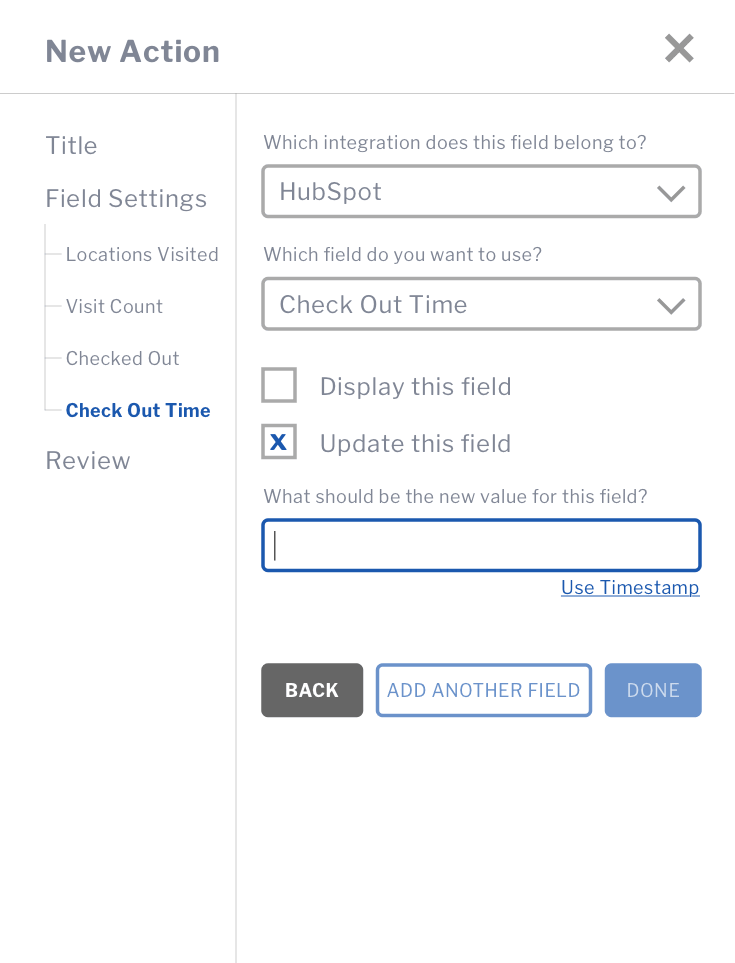
Wizard-style prototype helped users understand upfront what information was required,
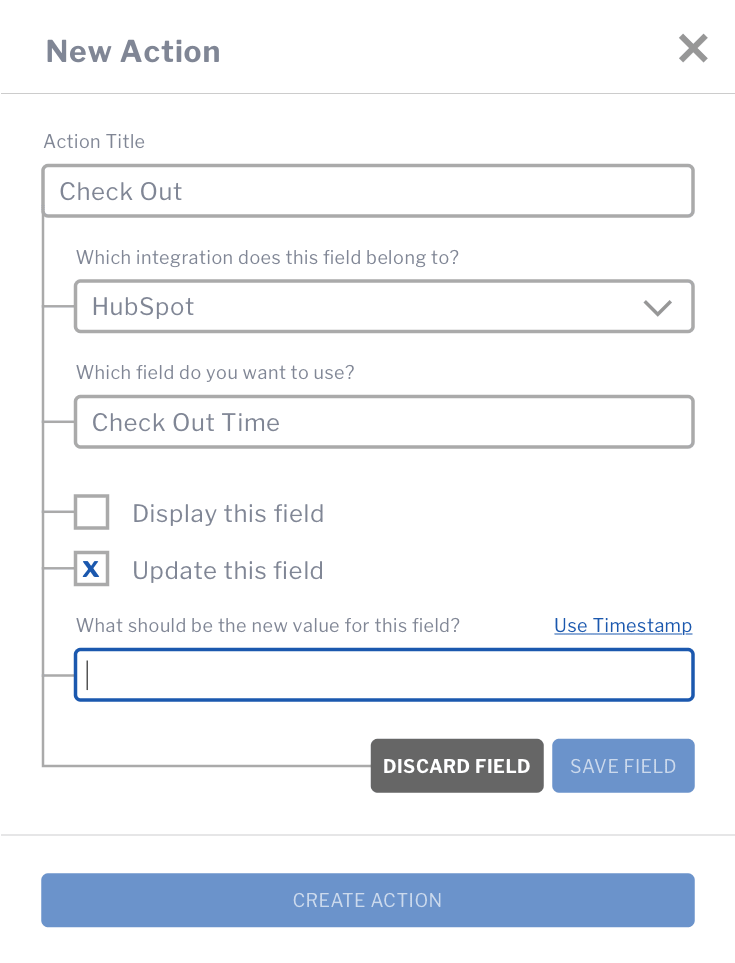
Progressive dependent fields prototype avoided overwhelming users with extraneous information.
My first priority was to use information from the tree testing exercise to redefine the web app’s information architecture and navigation.
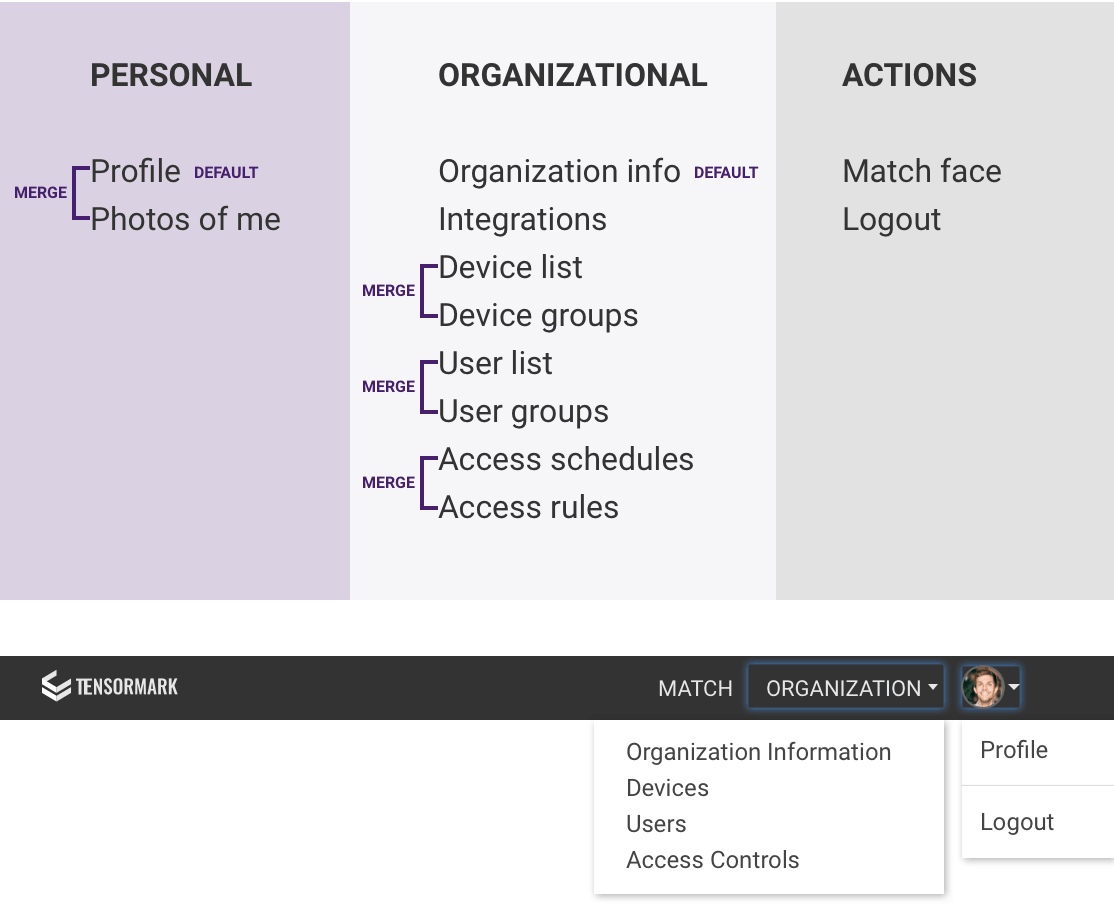
Recategorized pages of the web app with the accompanying updated navigation

These updates made using the platform more intuitive, but they also placed some very common actions at the same hierarchical level as rarer ones. I optimized for the most typical situations with a launch pad home page featuring key shortcuts.
The shortcuts displayed are specific to each user type (i.e. customer, employee operators, or administrator).
Each of these user types interfaces with TensorMark differently:
- Customers upload a selfie so their identity can be confirmed. Customers could include a guest at a concert or a warehouse worker with access to a restricted area.
- Employee operators are responsible for operating the hardware that confirms customers’ identities. Not all use cases require employee operators.
- Administrators create workflows that define what happens when a face is recognized. For example, they could configure an Unlock Door or Check Guest In workflow. They also control which employees have access to certain actions or areas.
Before administrators could create effective workflows, they needed a way to segment their employees and control access privileges for both groups and individuals.
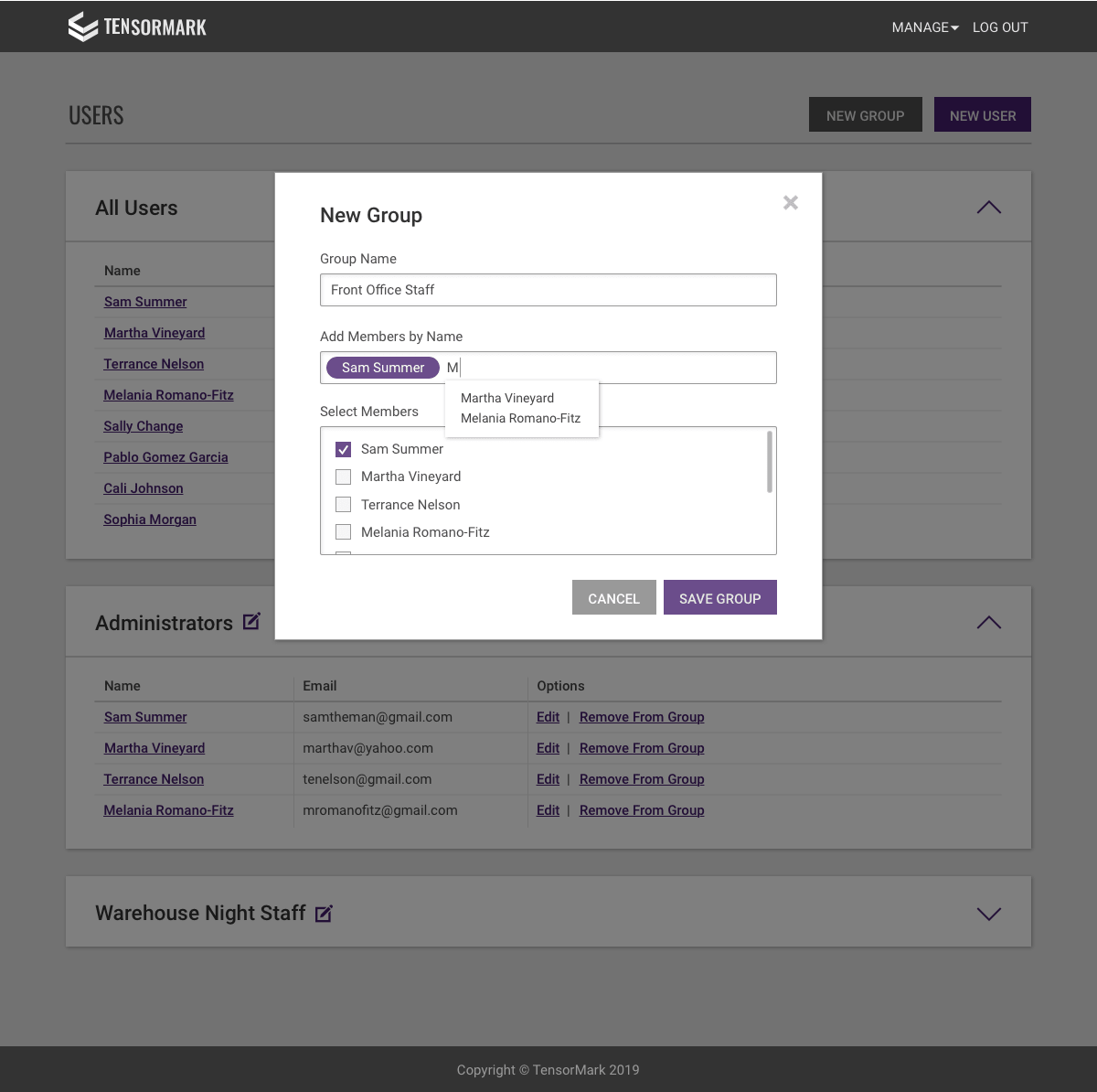
Administrators split employees into groups based on the access they need to specific actions, areas, and settings.
I broke workflow creation down into a step-by-step process that only reveals fields as they become relevant. This UI is flexible enough to support updates to any type of CRM field and custom rule-setting for hardware like locks.
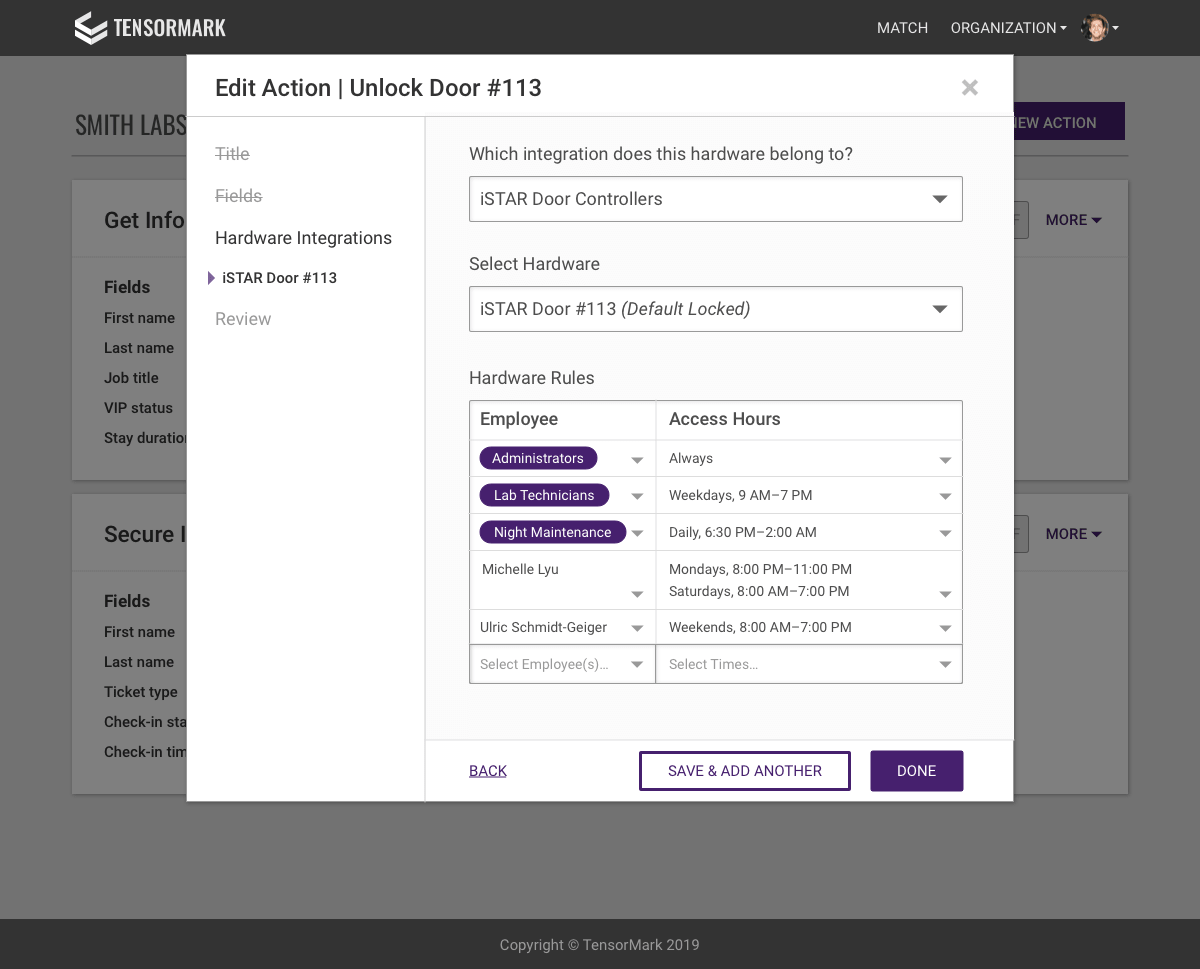
This interface allows administrators to configure hardware—in this case a lock on a specific door—with rules that apply to groups or individuals
TensorMark is in its early stages but has already launched a working MVP, and four engineers are working full-time to refine the product.
TensorMark was recently accepted into a partnership program with C-Cure, one of the most used ID badging platforms in the world.
Personally, a huge takeaway from this project was the importance of naming things. Using consistent language for user types, workflows, actions, and interface components was critical for keeping the partially remote team on the same page.